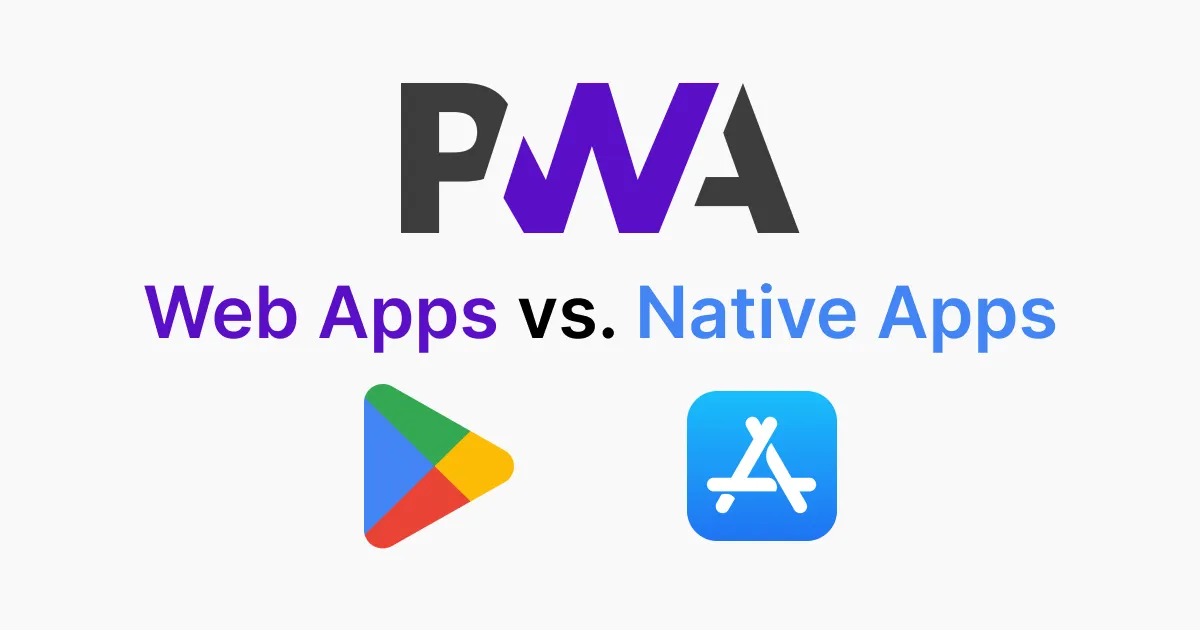PWAs vs. Native Apps: A Cost Comparison

Businesses seek cost-effective ways to reach customers on mobile. Native apps were the way to go but now, PWAs emerged as a compelling alternative. This post explores their cost-effectiveness.
costs native app progressive web app pwa
Mobile apps have transformed the way we interact with the world around us. From ordering food to booking a ride, there's an app for almost everything. But building a native app is no small feat. It requires a significant investment of time, money, and resources, not to mention the ongoing costs of maintenance and updates. This is where progressive web apps (PWAs) come in. PWAs offer a cost-effective alternative to native apps that can deliver a similar user experience without the high development costs. In this post, we'll compare the cost-effectiveness of PWAs and native apps, looking at the development, maintenance, and deployment costs of each.
Development Costs:
When it comes to development costs, PWAs have a clear advantage over native apps. PWAs are built using web technologies like HTML, CSS, and JavaScript, which are widely used and well understood by developers. This means that development costs for PWAs are generally lower than those for native apps, especially if you're building for multiple platforms. With native apps, you need to build a separate app for each platform (iOS, Android, etc.), which can significantly increase development costs.
Maintenance Costs:
Once your app is built, you'll need to maintain it to keep it up-to-date and bug-free. Here again, PWAs have an advantage over native apps. Because PWAs are built using web technologies, they can be updated just like a website. This means that there's no need to push out updates to the app stores, which can be time-consuming and expensive. With native apps, on the other hand, you'll need to submit updates to each app store separately, and each update must be approved before it can be published. This can be a costly and time-consuming process, especially if you're making frequent updates.
It's important to note that while native apps do require updates to be pushed to app stores, they can also be updated over-the-air (OTA) without the need for users to manually download the update. This can help reduce maintenance costs and make it easier to roll out updates in a timely manner. However, OTA updates may not always be a viable option, as they can come with their own set of limitations and considerations. We'll go deeper into OTAs in a future post.
Deployment Costs:
Both PWAs and native apps can be hosted on any server or cloud platform, so there is no significant difference in hosting costs between the two. However, there are some additional costs associated with deploying a native app that don't apply to PWAs. For example, when you submit a native app to the app store, there may be fees for distribution or developer accounts. Additionally, the app store approval process can be time-consuming, and there's always the risk of rejection if your app doesn't meet their guidelines.
On the other hand, PWAs don't require approval from an app store, so there are no fees or approval processes to worry about. This means that PWAs can be deployed more quickly and with less hassle than native apps. Additionally, because PWAs are web-based, they can be accessed from any device with a web browser, without the need to download and install an app from an app store.
Conclusion
In conclusion, when it comes to cost-effectiveness, PWAs offer a clear advantage over native apps. Development costs for PWAs are generally lower than those for native apps, and maintenance costs are lower because updates can be pushed out like a website. Of course, there are some cases where a native app may be necessary, such as when you need access to device-specific hardware or functionality.
If you're looking to build a mobile app for your business, at Negative Epsilon, we specialize in both PWA and native app development. Contact us today to learn more about how we can help you build a cost-effective mobile app that meets your business needs.